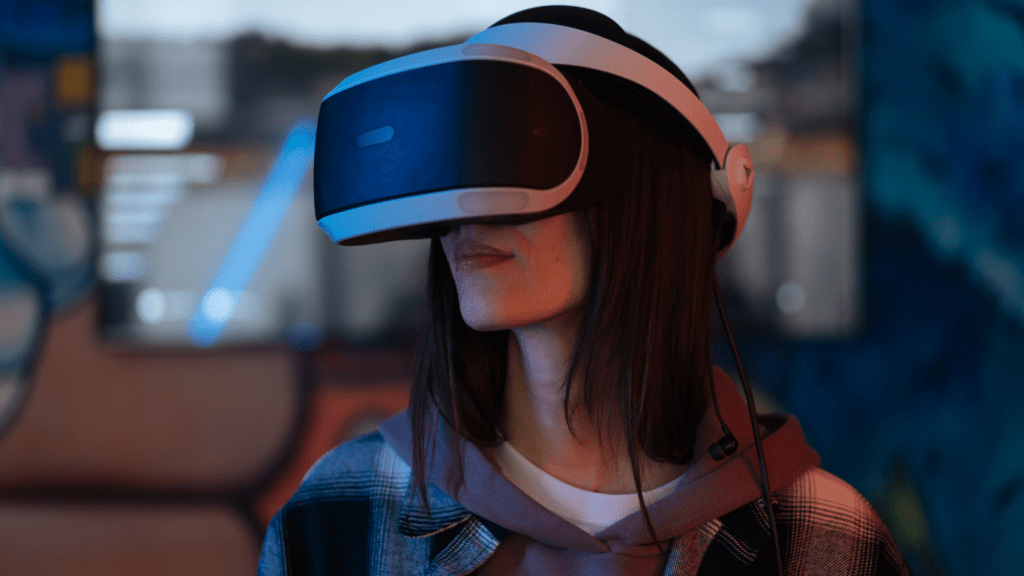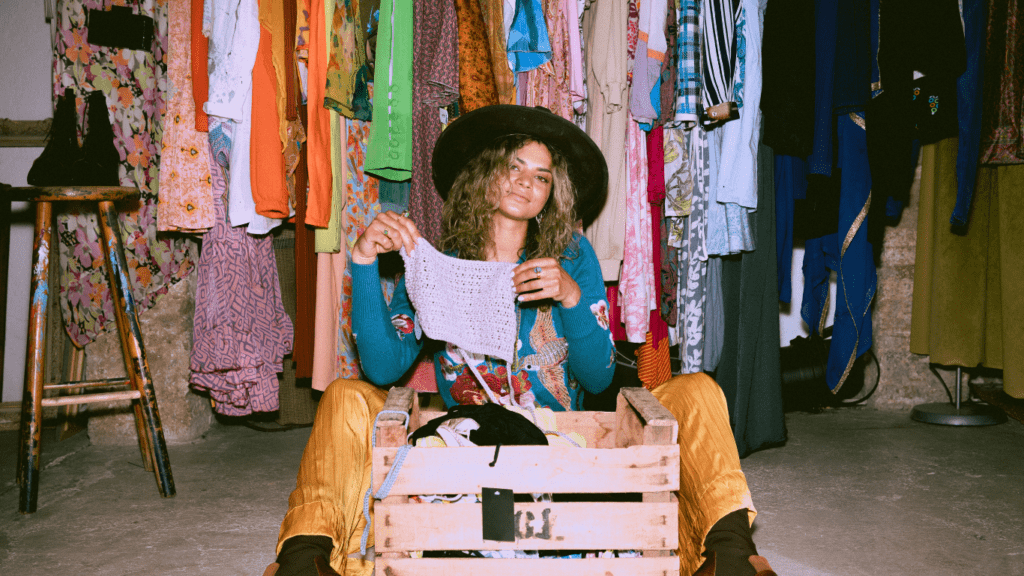Evolution of Fashion Retail
Fashion retail has undergone a seismic shift over the decades, evolving from traditional brick-and-mortar stores to a sophisticated online shopping experience. This transformation has been driven by changing consumer behavior and technological advancements.
Rise of Brick-and-Mortar Stores
Physical stores once dominated the fashion retail landscape. Department stores like Macy’s, founded in 1858, became household names by offering a wide array of products under one roof.
These stores thrived due to their ability to provide customers with the sensory experience of touching and trying on clothes. Malls flourished in the 1980s and 1990s, serving as social hubs where people shopped, dined, and entertained themselves. Retailers invested heavily in prime real estate to gain visibility and foot traffic. However, brick-and-mortar stores also faced high operating costs, which included:
- rent
- utilities
- staff salaries
Emergence of Online Shopping
- The advent of the internet revolutionized fashion retail.
- Amazon, launched in 1994, initially sold books but quickly expanded its offerings, setting the stage for e-commerce.
- Fashion brands followed suit, creating their own online platforms.
- Consumers gained the convenience of shopping from anywhere, anytime, and could access a wider range of products.
- Digital tools enabled personalized shopping experiences, with AI algorithms recommending products based on browsing history and preferences.
- Emerging technologies like virtual fitting rooms allowed shoppers to visualize how clothes would look without physically trying them on.
- Online shopping also brought challenges like sizing issues and the inability to experience the tactile aspects of clothing.
Current Trends in Fashion Retail
Many changes have reshaped fashion retail recently. Technology and consumer preferences drive these shifts.
Omnichannel Retail Experience
Retailers integrate online and offline channels. This seamless approach enhances consumers’ shopping journey. For example, customers can browse products online and pick them up in-store. According to the Harvard Business Review, 73% of shoppers use multiple channels during their shopping journey. This strategy retains brand consistency and offers flexibility, meeting consumers where they are.
Personalized Shopping Experiences
Retailers leverage data to offer personalized experiences. AI and machine learning analyze browsing behavior, purchase history, and preferences. Brands like Stitch Fix use data-driven recommendations to curate personalized fashion boxes. According to McKinsey, personalization can drive up to a 30% revenue increase. Shoppers enjoy a tailored experience that caters to their unique tastes and needs.
Sustainable Fashion Practices
Sustainability has become a significant focus. Consumers seek ethical and eco-friendly options. Brands implement practices like using recycled materials and reducing waste. Reformation is a prime example, focusing on sustainable practices and transparency. The Global Fashion Agenda reports that 75% of fashion companies have invested in sustainability. This trend addresses environmental concerns and attracts eco-conscious shoppers.
Technology Transforming Fashion Retail

Fashion retail evolves through technological advancements, dramatically reshaping shopping experiences.
Artificial Intelligence and Machine Learning
Artificial Intelligence (AI) and Machine Learning (ML) revolutionize fashion retail. Algorithms analyze customer data to provide personalized recommendations. AI chatbots enhance customer service by handling queries and guiding purchases. Predictive analytics optimize inventory management, reducing overstock and shortages, and improving sales forecasting.
Virtual and Augmented Reality
Virtual Reality (VR) and Augmented Reality (AR) elevate online shopping. Virtual fitting rooms allow customers to try on clothes digitally, solving sizing issues. AR apps enable users to visualize how clothes look in real time through their devices. These technologies enhance user engagement and reduce return rates.
Blockchain for Supply Chain Transparency
Blockchain technology ensures transparency in fashion supply chains. It tracks products from creation to final sale, providing verifiable data on a product’s journey. This increases accountability, combats counterfeit goods, and meets consumer demand for ethical sourcing. Brands can share this info with customers, building trust and loyalty.
Challenges in the Transition to Online Retail
Fashion retailers face various challenges when shifting from physical stores to online platforms. These obstacles range from maintaining customer loyalty to handling logistical issues.
Customer Retention and Loyalty
Retaining customers online demands strategic initiatives due to the lower barrier to switching brands. Personalized experiences, like AI-driven recommendations, can enhance customer loyalty. In e-commerce, consumers value convenience and fast delivery. Providing efficient service and exclusive online promotions helps maintain satisfaction. Loyalty programs adapted to the digital landscape encourage repeat purchases.
Logistic and Supply Chain Issues
The logistical complexities of online retail challenge fashion businesses due to higher shipping volumes. Managing inventory efficiently is crucial. Predictive analytics and real-time inventory tracking reduce out-of-stock situations. Delays in supply chains impact customer satisfaction significantly. Collaborating with reliable logistics providers ensures timely delivery, which is vital for customer retention. Returns processing also incurs additional costs, requiring streamlined reverse logistics.
Cybersecurity Concerns
Transitioning to online retail exposes businesses to cybersecurity threats, posing risks to sensitive customer data. Protecting this data is paramount. Implementing robust security measures, like encryption and two-factor authentication, addresses these issues. Fashion retailers must ensure compliance with data protection regulations, safeguarding their reputation. Regular security audits and staff training prevent cyber-attacks and data breaches.
Future Predictions for Fashion Retail
Fashion retail’s future is evolving rapidly with technology and changing consumer preferences.
Integration of AI and IoT
AI and IoT are set to transform fashion retail. AI algorithms analyze data to predict trends and personalize shopping experiences. Examples include chatbots and virtual assistants that enhance customer service. IoT, through smart mirrors and connected devices, offers interactive shopping in physical stores. Retailers track inventory in real-time, ensuring efficient stock management.
Growth of Direct-to-Consumer Brands
Direct-to-consumer (DTC) brands are reshaping the industry. These brands establish a direct relationship with customers, bypassing traditional retailers. This model offers better pricing and personalized products. Examples include Warby Parker and Glossier, which gained popularity by engaging directly with consumers. The DTC approach also allows for greater control over brand image and customer experience.
Expansion of Social Commerce
Social commerce leverages social media platforms for shopping. Consumers discover, review, and purchase products without leaving their favorite apps. Platforms like Instagram and Facebook have integrated shopping features. Influencers and user-generated content drive this trend. Social commerce simplifies the buying process and builds community around brands, making it a key player in fashion retail’s future.



 Senior Fashion & Beauty Writer
Eric Camp, a seasoned writer and fashion expert, lends his sharp eye for trends and beauty to Glam World Walk. With a background in luxury retail and editorial work, Eric dives deep into the latest runway trends, offering readers insightful takes on the intersection of style and culture. His beauty product reviews and fashion industry analyses make him an indispensable part of the team, keeping readers ahead of the curve on all things chic and stylish.
Senior Fashion & Beauty Writer
Eric Camp, a seasoned writer and fashion expert, lends his sharp eye for trends and beauty to Glam World Walk. With a background in luxury retail and editorial work, Eric dives deep into the latest runway trends, offering readers insightful takes on the intersection of style and culture. His beauty product reviews and fashion industry analyses make him an indispensable part of the team, keeping readers ahead of the curve on all things chic and stylish.
